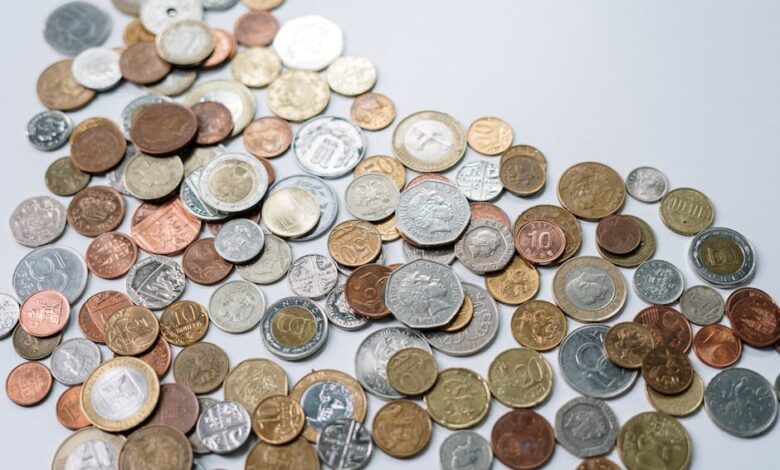Metals in Motion: Exploring the Interplay of Industrial Demand, Investment Strategies, and Economic Indicators

In an increasingly interconnected global economy, the dynamics of metal markets provide valuable insights into broader economic trends and investment opportunities. This article delves into the multifaceted roles of key metals, focusing on silver's unique position as both a vital industrial component and a sought-after investment asset. We will also explore how copper prices serve as indicators of global economic health, and the surging demand for rare earth metals driven by advancements in green energy technologies. Additionally, we will compare platinum and palladium as investment options, discuss the importance of metals in diversifying investment portfolios, and examine how inflation influences the pricing landscape of both precious and industrial metals. Finally, we will consider the future of aluminum in a sustainable economy and the implications of mining regulations on metal prices. As we navigate these topics, we aim to provide a comprehensive understanding of the complex interplay between metal markets and the global economy.
- 1. **Silver's Dual Role: Industrial Applications and Investment Appeal**
- 2. **Copper Prices as Economic Barometers: Insights into Global Trends**
- 3. **Green Energy and Rare Earth Metals: Driving Demand in a New Era**
1. **Silver's Dual Role: Industrial Applications and Investment Appeal**
Silver plays a multifaceted role in both industrial applications and investment markets, making it a unique asset in the commodities landscape. On the industrial front, silver is indispensable due to its high electrical conductivity, thermal conductivity, and reflectivity. It is widely utilized in electronics, solar panels, batteries, and medical devices. The growing demand for renewable energy technologies, particularly solar energy, has further cemented silver's position as a critical material in the transition to a greener economy. As industries increasingly seek efficient and sustainable solutions, the demand for silver is expected to rise, potentially driving prices higher.
Conversely, silver's appeal as an investment asset is well-established. Often referred to as "poor man's gold," silver is seen as a hedge against inflation and economic uncertainty. Investors turn to silver during times of financial instability, viewing it as a safe haven similar to gold. Additionally, the metal boasts a relatively low entry price compared to gold, making it accessible to a wider range of investors. Silver's dual role creates a dynamic interplay between its industrial demand and investment attractiveness, influencing its market price and availability.
Moreover, the correlation between industrial usage and investment trends highlights the importance of monitoring economic indicators that can affect both sectors. For instance, a booming economy may enhance industrial demand for silver, while geopolitical tensions might spur investment interest. As the world increasingly embraces sustainable technologies and faces economic fluctuations, silver's dual role will likely continue to shape its market dynamics and investment landscape.
2. **Copper Prices as Economic Barometers: Insights into Global Trends**
Copper prices have long been viewed as reliable indicators of global economic health, often referred to as "Dr. Copper" due to its ability to predict economic trends. This reputation stems from copper's widespread use across various industries, including construction, electronics, and manufacturing. As economies expand, the demand for copper typically rises, reflecting increased infrastructure development and consumer goods production. Conversely, during economic downturns, copper demand tends to decline, leading to lower prices.
Recent fluctuations in copper prices can be attributed to several factors, including global supply chain disruptions, geopolitical tensions, and shifts in monetary policy. For instance, the COVID-19 pandemic caused significant interruptions in mining operations and logistics, which, coupled with a surge in demand for electronic devices, resulted in soaring copper prices. Additionally, China's economic performance plays a crucial role, as the country is the largest consumer of copper globally. As China's economy recovers or contracts, its impact on copper demand and, consequently, prices can be profound.
Moreover, the increasing focus on renewable energy and electric vehicles is likely to sustain copper's relevance as an economic barometer. The transition to green technologies demands substantial amounts of copper for wiring and components, further solidifying its status as a critical metal in the context of global economic trends. Investors and analysts closely monitor copper prices to gauge economic momentum, making them not only a commodity of industrial importance but also a key signal for broader market sentiment.
3. **Green Energy and Rare Earth Metals: Driving Demand in a New Era**
The transition to green energy is significantly reshaping the demand for rare earth metals, which are essential components in various renewable technologies. As the world increasingly focuses on reducing carbon emissions and enhancing energy efficiency, the need for rare earth elements (REEs) has surged. These metals are critical in the production of high-performance magnets used in wind turbines, electric vehicles (EVs), and battery technologies, making them integral to the green energy revolution.
One of the most notable applications of rare earth metals is in the manufacturing of rare earth magnets, particularly neodymium-iron-boron (NdFeB) magnets, which are key components in electric motors and generators. The growing adoption of EVs, which are projected to dominate the automotive market in the coming years, directly correlates with the rising demand for these magnets. Additionally, the expansion of offshore wind farms necessitates powerful magnets, further driving the need for rare earth metals.
Moreover, the production of efficient energy storage systems, such as lithium-ion batteries, heavily relies on rare earth elements like lanthanum and praseodymium. As grid-scale storage solutions become more critical in managing intermittent renewable energy sources, the demand for these metals is expected to climb.
However, the supply chain for rare earth metals faces challenges, including geopolitical tensions and environmental concerns associated with mining practices. Many countries are seeking to establish more sustainable and reliable sources of these critical materials to support green technologies. This evolving landscape presents both opportunities and challenges for investors and industries alike as they navigate the implications of increased demand for rare earth metals in a sustainable future.
In conclusion, the intricate relationship between metals and their multifaceted roles in both industrial and investment markets underscores their significance in today's economy. Silver, with its unique blend of industrial utility and investment allure, exemplifies how materials can serve dual purposes, while copper prices provide a valuable lens through which to gauge global economic health. The burgeoning demand for rare earth metals, driven by advancements in green energy technologies, highlights the critical nature of these resources in fostering sustainable development.
As the debate between platinum and palladium continues, investors must weigh the merits of each metal in their portfolios, especially in light of inflationary pressures that affect the pricing dynamics of both precious and industrial metals. Additionally, the future of aluminum looks promising as it aligns with sustainable practices, further emphasizing its role in a greener economy.
However, the impact of mining regulations cannot be overlooked, as they shape the supply chain and ultimately influence metal prices. As we move forward, understanding these interconnections will be vital for investors seeking to diversify their portfolios amidst fluctuating market conditions. By staying informed about these trends, stakeholders can better navigate the complexities of the metals market and make strategic decisions that align with both economic realities and future sustainability goals.





